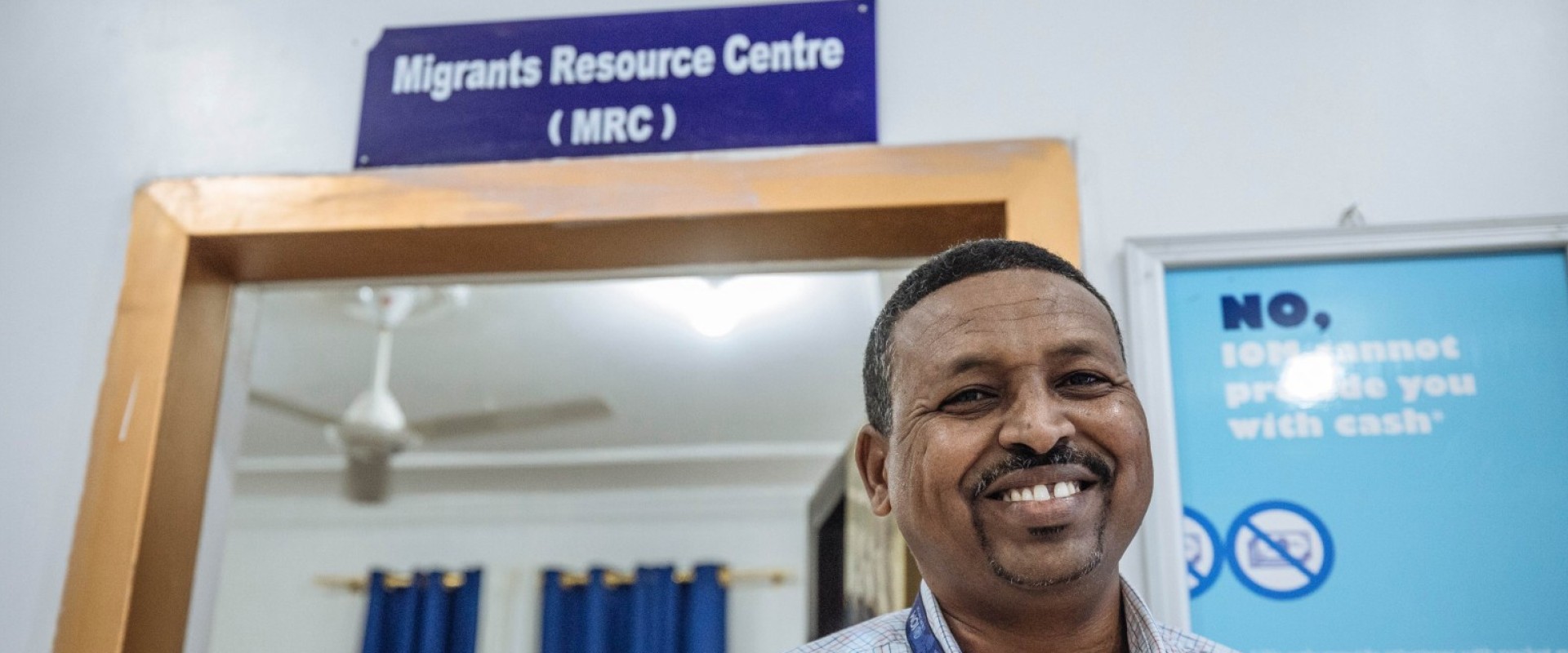Recommendation to Broaden Coordination Role of Migration Response Centres
Everyday scores of stranded and vulnerable migrants make their way to any one of 12 Migration Response Centres (MRCs) in the East and Horn of Africa with the intention of accessing various services, including medical attention and information.
The MRCs are all situated along key migration routes and are run by governments and the International Organization for Migration (IOM) with support from programmes such as the EU-IOM Joint Initiative for Migrant Protection and Reintegration in the Horn of Africa (the EU-IOM Joint Initiative).
Due to the thousands of migration movements recorded in the region annually, there is need for MRCs to play an even greater role in supporting migrants in distress, according to an assessment (see executive summary) conducted by Altai Consulting supported under the EU-IOM Joint Initiative. Among those who participated in the research were partner agencies, including governmental bodies.
MRCs have been credited with providing life-saving assistance, including at the height of the COVID-19 pandemic when movement restrictions and border closures left many more migrants stranded and in need of support.
|
The numbers and locations of the MRCs are as follows: Djibouti (1), at Obock Ethiopia (5), at Dire Dawa, Metema, Moyale, Semera and Togochale Somalia (3), at Bossaso, Hargeisa and Mogadishu Sudan (3), at Gedarif, Kassala and Khartoum |
“Across all locations, MRC stakeholders and partners perceive the MRC as one of the most relevant actors in the field of migration management,” the report said. “The MRC is seen as the institution that holds the knowledge required by everyone else active in migration and that can bring all the stakeholders together to improve the migration management response in the region.”
The suggestion is for MRCs to leverage their role as a coordinating body and to provide support in areas like training and information-sharing in migrant protection, migrants’ rights, human trafficking and gender-based violence.
Deeper collaboration would benefit from the establishment of a structured communication and an electronic referral mechanism. Just as important would be supporting partners with infrastructure renovations, such as the work done with migrant community schools in Sudan.
Similarly, there is need to boost shelter capacity in safehouses. This is necessitated by the fact that migrants currently spend prolonged time in transit. In Ethiopia this is partly due to the temporary restrictions of assisted voluntary returns to the northern parts of the country.
Direct Support
Other ways of improving collaboration between MRCs and government stakeholders would include the strengthening of coordination mechanisms across the various MRC partners, together with participating in established coordination platforms such as Hargeisa’s mixed migration management taskforce meetings.
In turn, government stakeholders can support MRC operations by availing staff, including social workers, as well as focusing their extensive reach to identify migrants in vulnerable situations while also providing direct support to migrant groups.
IOM teams supporting the MRCs strive to continue providing quick and efficient service to the migrants who need it. This is despite that migrants reported being satisfied with the services provided by MRCs, especially free medical assistance.
Accessible Feedback
Two percent of respondents reported being very satisfied, 76 percent were satisfied, 20 percent were neutral and 2 percent were dissatisfied. The highest level of satisfaction was among beneficiaries between the ages of 11 and 17. However, migrants singled out the need to speed up turnaround in assisted voluntary return and reintegration support, followed by more and better food.
The research findings also pointed to the benefit of having an official and easily accessible feedback and complaint mechanisms at the MRCs. Beneficiaries polled said they were most comfortable sharing feedback or a complaint by addressing it directly to an MRC staff member (55%), followed by calling the hotline (29%), where one existed.
About the EU-IOM Joint Initiative
Launched in December 2016 and funded by the European Union (EU) Emergency Trust Fund for Africa, the programme brings together 26 African countries of the Sahel and Lake Chad region, the Horn of Africa, and North Africa, the EU, and IOM around the goal of ensuring migration is safer, more informed and better governed for both migrants and their communities.
For more information please contact: Laura Boucsein, email: lboucsein@iom.int or Wilson Johwa, email: wjohwa@iom.int
